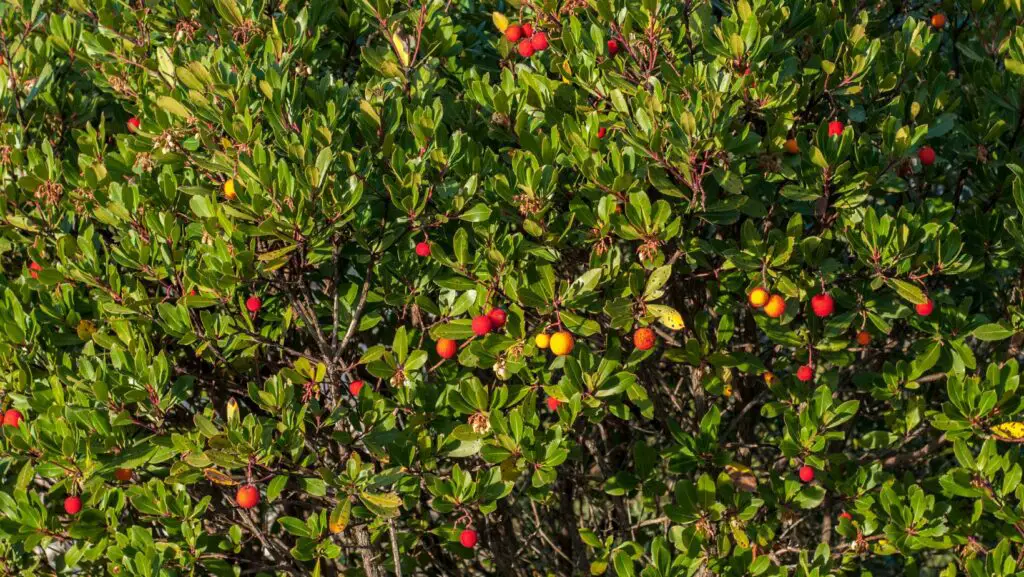
The arbutus is a shrub found in the natural environments of the south of France, which means that it requires very little care and knows neither parasites nor diseases. Still unknown everywhere else, it has all the qualities to leave its native Mediterranean.
In this article, I have gathered for you all the information about this plant, its main characteristics and what you need to know to plant and grow it.
Characteristics of the arbutus tree
| Scientific name | Arbutus unedo |
| Family | Ericaceae |
| Origin | Mediterranean countries |
| Foliage | Evergreen |
| Flowering | October-January |
| Rusticity | -10°C to -15°C (-50°F to -59°F) |
| Exposure | Sun or light shade |
| Soil | Preferably acidic |
Its dense habit, its evergreen, glossy and finely toothed leaves, its intense branching and its gnarled and decorative red wood should seduce more than one gardener. Between October and January, the small white flowers of the year are next to the fruits born from those of the previous year. These small red to orange grainy balls, 1 to 2 cm in diameter, are edible although a bit mealy.
How to grow an arbutus tree
This is a typically Mediterranean shrub that adapts very well to continental climates thanks to its good hardiness. It is particularly recommended for the acid soils of western France, even by the sea, as it is perfectly resistant to sea spray.
If necessary, thin out the center of the crown from the tenth year, to aerate it.
Tip: Whatever its age, the arbutus tree supports very well the severe pruning. It is always a pity to resort to this on adult trees, but this practice applied to young trees allows them to produce, in the year, a large number of branches starting from the foot.
How to grow arbutus in a pot
Among its many qualities, the arbutus lends itself readily to pruning. You can therefore use it as a simple topiary, for pot culture. This is how you will often find it offered in garden centers.
Pruning becomes more complicated afterward, as maintaining it strictly in its topiary form means doing without a large quantity of flowers and fruit, as the fruit cycle lasts 2 years.
Prune by reducing the branches by a third of their length, and spare a few bunches of flowers or young fruits, so as not to completely deprive yourself of strawberries in winter.
For an immediate effect, repot a plant already well structured and formed from 1,25 to 1,50 m. It will be able to remain 3 or 4 years without repotting, with a followed nutrition (fertilizer for small fruit trees every month between April and September) and an annual surfacing. The ideal wintering is between 0 and 5°C.
Where to plant a strawberry tree
Plant the arbutus in isolation or in a grove of several feet and let it take its free, slightly twisted form; this is how it is most beautiful.
Its austere foliage is best combined with the bright blooms of other acidic shrubs like broom.
Our selection
Only one type is easy to find in the trade. You may be lucky enough to find the much rarer ‘Compacta‘ variety for growing in large pots.
In a nutshell
The Arbutus tree is an evergreen that grows very well. Its incredibly long roots and branches produce bright, fragrant blooms, making it an attractive addition to any landscape. It is a durable species that can handle cold winters, flooding and drought. With its many uses and distinct beauty, it’s no wonder why the Arbutus tree is so beloved by gardeners everywhere.

Hi!
I am the guy behind Theyardable.com. I grew up on a homestead and I am here to share the knowledge I have and things I learn while living in the countryside.
